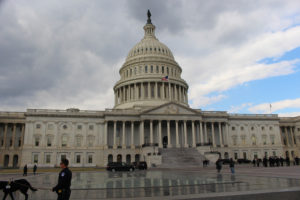Feb 28, 2018Budget stalemates and government shutdowns have real consequences
Congress and multiple presidential administrations have replayed the government shutdown game of chicken many times over the past few years. Because it is recycled so often, we can become numb to its impact and the threats surrounding it. However, the brinksmanship isn’t just fodder for pundits on cable news outlets. It has real negative consequences for our industry and those should be made known to our representatives, so they can avoid repeating it.
Each time the government is shut down, resources stagnate. The people we rely upon to deal with immediate issues at USDA, EPA, the Office of the Trade Representative and others simply aren’t on the other end of the telephone or email until the government is reopened. If the shutdown lasts a substantial period of time, those impacts magnify. 
For example, the Obama administration came to a stalemate with Congress and the government was shut down for 16 days in 2013. During that time, the operations of the H-2A guest worker program stopped and producers who needed labor for harvest were unable to secure those workers. Perishable crops suffered and money was lost unnecessarily and permanently.
The H-2A example is the worst-case scenario as government operations were halted for a long period of time. However, most shutdown threats don’t end this way. It is reasonable to ask whether the drama of the threat is largely just bluster.
Unfortunately, the answer is no. There are pervasive consequences to the threats and the “continuing resolutions” that are Congress and the administration’s way of avoiding the issue temporarily.
When a continuing resolution is passed, the government continues to be funded at the same rate as the prior year for a limited period. However, agency heads do not receive a full year of funding for the programs they oversee. Instead they can only be confident in receiving the fragment of funding that the temporary continuing resolution provides.
For programs such as agricultural research, the result is that announcements of funding for researchers are held up. This results in a constrained application period for new projects and ongoing projects that see the revenue supporting them arriving in fits and starts, with a possibility that it doesn’t arrive at all. This means that the funding for potato research that flows through the Agricultural Research Service and the National Institute of Food and Agriculture is not being delivered at its full value and impairing the vital research it is intended to support.
Given this challenging recent history, it is extremely positive that the House and Senate were able to produce a two-year budget agreement that has paved the way for completing the fiscal year 2018 appropriations process and a solid foundation for the 2019 process as well. At its core, these are the most basic of the responsibilities of our congressional leadership. This agreement gives us some optimism that this success may lead to others such as a Farm Bill being reauthorized in 2018.
– John Keeling, CEO National Potato Council














